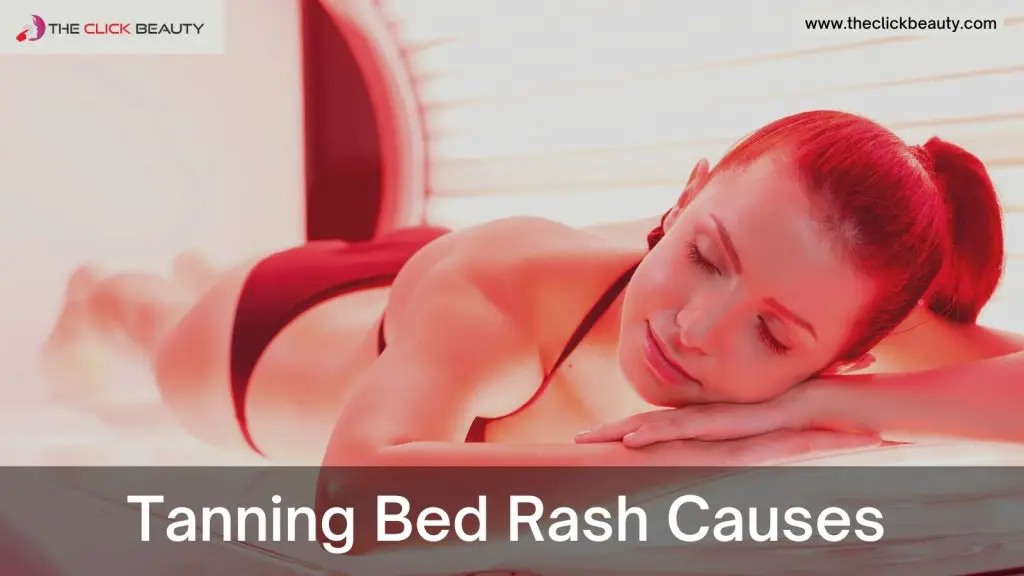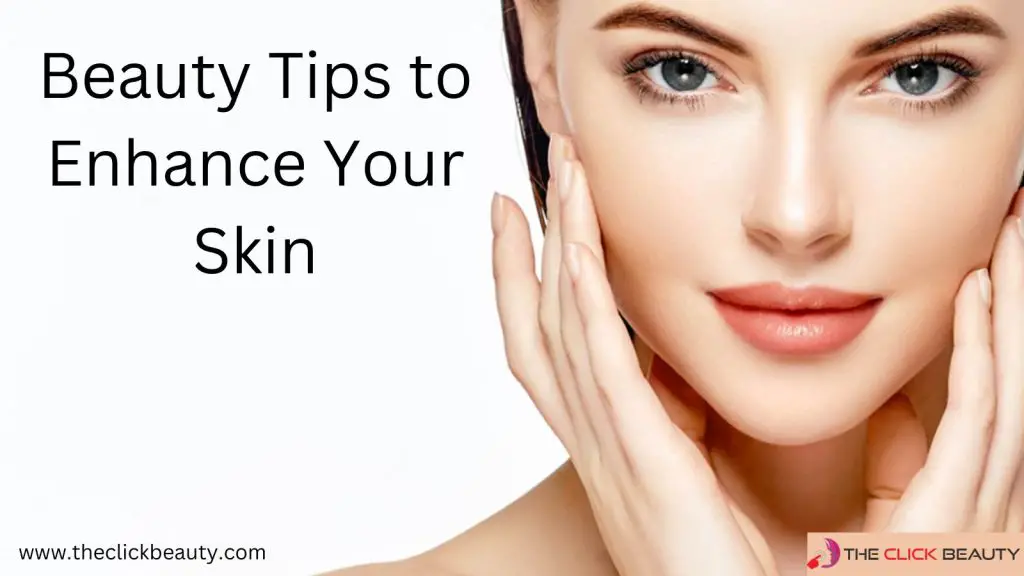Most people know sun beds are bad for the skin. However, many people don’t know that they risk developing a rash from using them. In this blog post, we will identify the tanning bed rash causes and offer some tips for preventing it. Keep reading to learn more!
What is a tanning bed rash?
Contact with the UV light emitted by the tanning bed is typically responsible for causing a rash. The skin may become irritated and red, and can develop bumps and blisters as well. Using lotions or creams in the tanning bed can sometimes lead to a rash due to an allergic reaction.
If a rash occurs following tanning bed usage, seeking medical attention from a doctor or dermatologist is necessary for proper treatment. Left untreated, a rash from a tanning bed can lead to more severe skin conditions, such as sun poisoning.
What are the symptoms of tanning bed rash?
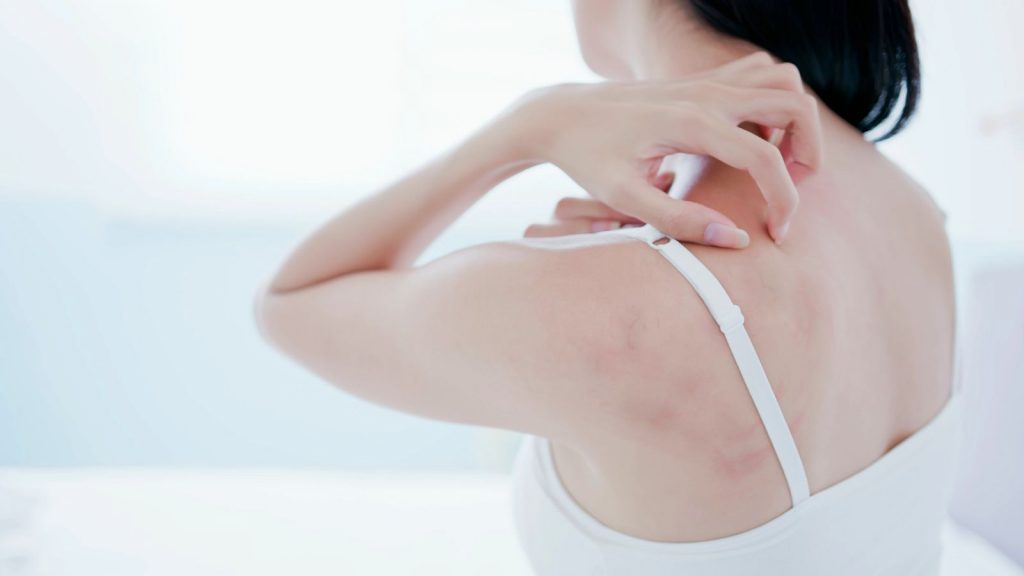
Tanning bed rash appears as tiny, raised bumps on the skin. The bumps have the potential to appear red, itchy, and inflamed and frequently have a surrounding region of skin that is raised or swollen.
In some cases, the rash may also ooze clear fluid or bleed. See a doctor if you develop a skin rash after using a tanning bed to diagnose and treat the cause.
What are the causes of a tanning bed rash?
A sun poisoning rash from a tanning bed can have several causes.
- UV radiation overexposure is one of the most frequently encountered issues. It can occur if you use a tanning bed for too long or if the bed doesn’t have adequate filters to protect your skin.
- Another potential reason is an allergic response to a substance in the tanning bed, like the commonly used lotion before sun exposure. See a doctor immediately if you notice any itching, redness, or swelling after using a tanning bed.
- With prompt treatment, sun poisoning rashes usually clear up within a week.
How to treat a tanning bed rash?
Ah, the sun. The great ball of gas warms our planet and makes us feel so good. We all enjoy soaking up its sunshine, but occasionally we go too far. That’s when a nasty tanning bed rash can set in. So what do you do to treat it? Keep reading to find out!
- Individuals with delicate skin should steer clear of tanning beds. If you must use a tanning bed, wear protective clothing, such as a rash guard or long-sleeved shirt.
- If a rash appears after using a tanning bed, avoid additional contact with sunlight or UV rays. It will help to prevent the rash from getting worse.
- Apply a cool compress to the affected area. Its assistance aids in soothing the skin and diminishing inflammation.
- Administer a topical medication to the impacted region. Moisturizing the skin will aid in accelerating the healing process.
- See a doctor or dermatologist for treatment if the rash is severe.
Prevention tips for avoiding a tanning bed rash
- Avoid using tanning beds that are not clean.
- Avoid using tanning beds that need to be adequately sanitized.
- Avoid using tanning beds used by someone else without being cleaned first.
- Do not use tanning beds that lack proper ventilation.
- Avoid tanning beds that use UV lamps that are more than six months old.
How long does tanning bed rash last?
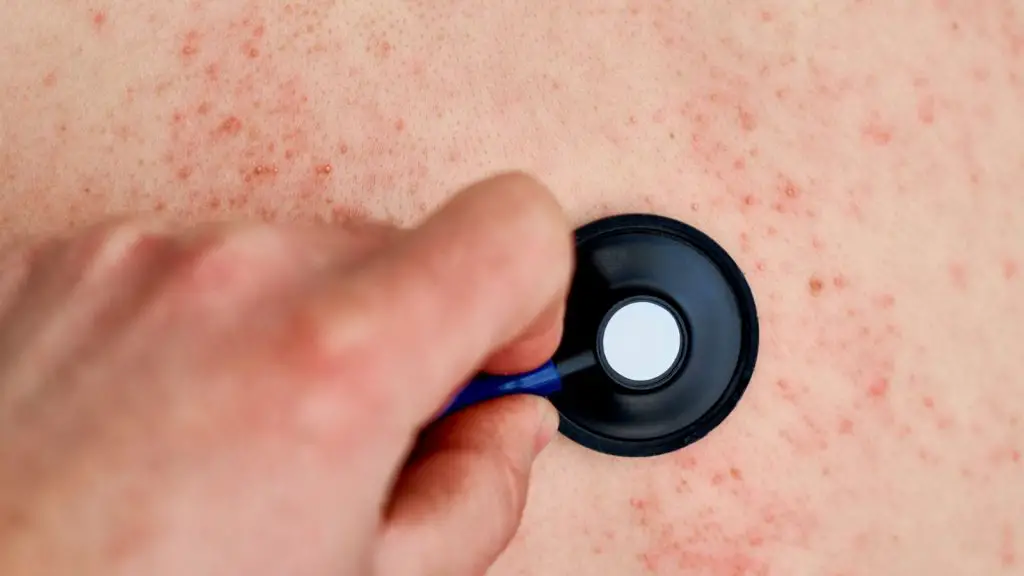
A tanning bed rash can last from a few days to weeks. The severity of the rash and your level of care will determine everything. Typically, a mild rash tends to disappear within a week’s time. However, if you have a more severe rash, it could take up to two weeks to completely disappear.
How to make tanning bed rash go away?
It is very easy to make the rash go away quickly. To start, try applying a cold compress to the area. It has the potential to provide relief for the skin and decrease inflammation. You can also take off-the-shelf antihistamine to help relieve itching.
In case of a severe rash, seeking medical attention from a doctor or dermatologist might be advisable. They can prescribe stronger medication to help clear up the rash. In most cases, tanning bed rash is not painful and will go away independently with home treatment.
What to put on tanning bed rash?
You can do a few things to ease the discomfort of a tanning bed rash. For one, try applying a cold compress to the affected area. You can also take an over-the-counter antihistamine to help with itching.
If the rash is nasty, you may need a prescription cream from your doctor. In any case, keep the affected area clean and dry to prevent further irritation.
What does it mean when you have a tanning bed rash on your buttocks?
A tanning bed rash on the buttocks is a form of sun poisoning. The rash is usually red and itchy and can be painful. You may be wondering how to get rid of a tanning bed rash on your buttocks.
You should avoid scratching the area if you have a tanning bed rash on your buttocks. Scratching can make the rash worse and lead to infection. You should also avoid using lotions or oils on the area, as this can cause the rash worse.
Is tanning bed rash contagious?
Tanning bed rashes are not contagious, but they can be uncomfortable and unsightly. You should see your doctor for treatment if you develop a tanning bed rash.
What does tanning bed rash look like?
The rash will be red and blotchy and may be accompanied by itchiness, burning, or swelling. The rash may also cause the skin to blister or peel in certain situations. If you think you may have a sun poisoning rash from the tanning bed, seeing a doctor or dermatologist is essential as soon as possible.
They can diagnose the rash and provide the appropriate treatment. You can guess it from tanning bed rash pictures. Left untreated, sun poisoning rash from a tanning bed can cause long-term damage to the skin.
What are home remedies for tanning bed rash?
If you experience a rash after your next tanning salon visit, try one of these home remedies to soothe your skin.
To start, try applying a cold compress to the affected area. It will help reduce any swelling and redness. You can make a cold compress by wrapping ice in a clean cloth or using a bag of frozen peas. Use the compress for 10-15 minutes each time.
If your rash is particularly itchy, you can try mixing equal parts baking soda and water to form a paste—tanning bed rash pictures.
What is tanning bed treatment for psoriasis?
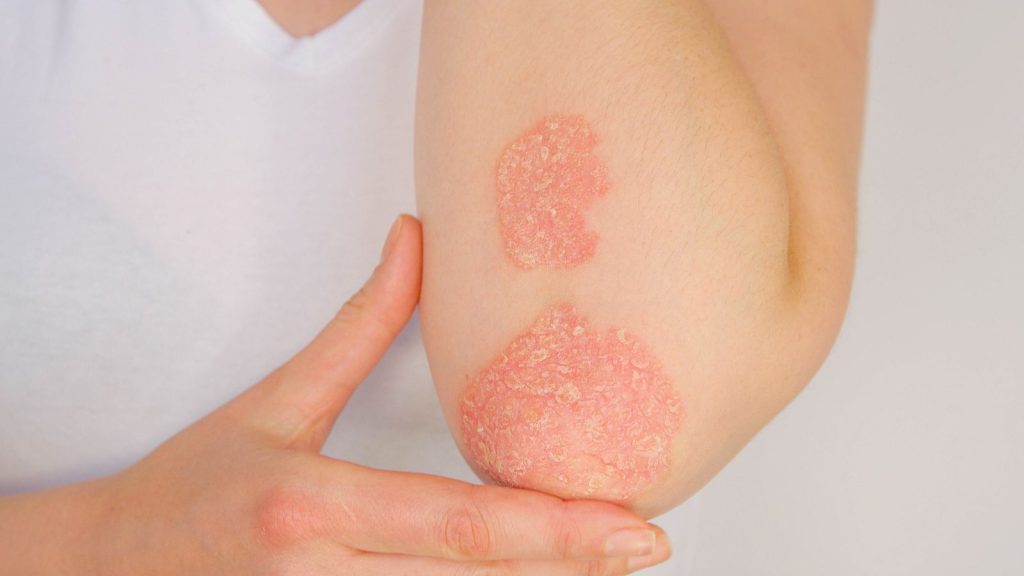
Tanning beds are a type of ultraviolet light therapy used to treat psoriasis. The UV rays from the tanning bed can help slow skin cell growth and reduce inflammation. Tanning bed treatment for psoriasis is usually done every week for six to eight weeks.
Individuals who have psoriasis and utilize tanning beds might encounter an initial worsening of their symptoms, yet this typically ameliorates with ongoing therapy. Tanning bed treatment for psoriasis is considered safe when done under the supervision of a dermatologist.
What is tanning bed rash on legs?
There are a few things that can cause tanning bed rash. Exposure to UV rays is often attributed as one of the main causes. It can happen if you use proper sunscreen or the tanning bed needs adequate UV protection.
An alternative reason could be an allergic response to a substance in the tanning bed, like the lotion or oils utilized. Tanning bed rash pictures can tell you about this.
If you develop a rash after using a tanning bed, identify what may have caused it.
What does tanning bed rash on heels look like?
Tanning bed rash on heels usually looks like a small group of blisters or bumps. They may be red, itchy, and swollen. The rash can extend to different body areas, including the legs or arms.
If you think you have a tanning bed rash, you must see a doctor immediately. The rash may result from either an infection or an allergic response to tanning bed products. A doctor will be able to diagnose and treat your rash properly.
What are the best tanning bed creams for a rash?
Do you have a rash after using a tanning bed? If so, you’re not alone. Many people experience a rash after using a tanning bed. This blog post will discuss the best tanning bed creams for a rash.
We’ll also discuss how to treat the rash and prevent it from happening again. Keep reading for more information.
1. Australian Gold Cheeky Brown Accelerator
This tanning bed cream is designed to help you achieve a dark tan quickly and evenly. The formula contains bronzing agents that work to deepen your natural skin tone. Your skin will be soothed and nourished by the aloe vera and vitamin E enriched cream.
2. Ed Hardy Coconut Kisses Golden Tanning Lotion
This tanning bed cream from Ed Hardy is infused with coconut oil and shea butter to hydrate and nourish your skin. The formula contains vitamin E to protect your skin from free radical damage. Furthermore, the cream contains a hint of self-tanner for attaining a radiant sun-kissed complexion.
3. Jergens Natural Glow Daily Moisturizer
This daily moisturizer from Jergens gradually builds a natural-looking tan over time. The formula is enriched with antioxidants and vitamin D to nourish your skin. Additionally, the moisturizer is non-greasy and absorbs quickly into the skin.
4. Neutrogena Healthy Skin Glow Sheers
These sheer tanning lotions from Neutrogena are designed to give your skin a natural-looking glow. The lightweight and non-greasy formulas are perfect for applying to both the face and body. Moreover, the lotions contain vitamin D to provide nourishment for your skin.
5. Banana Boat Summer Color Self-Tanning Lotion
This self-tanning lotion from Banana Boat gives you a natural-looking tan in just one hour. The formula’s water resistance lasts 80 minutes, making it perfect for beach or pool usage. Vitamin A, C, and E are infused into the lotion to nourish your skin.


